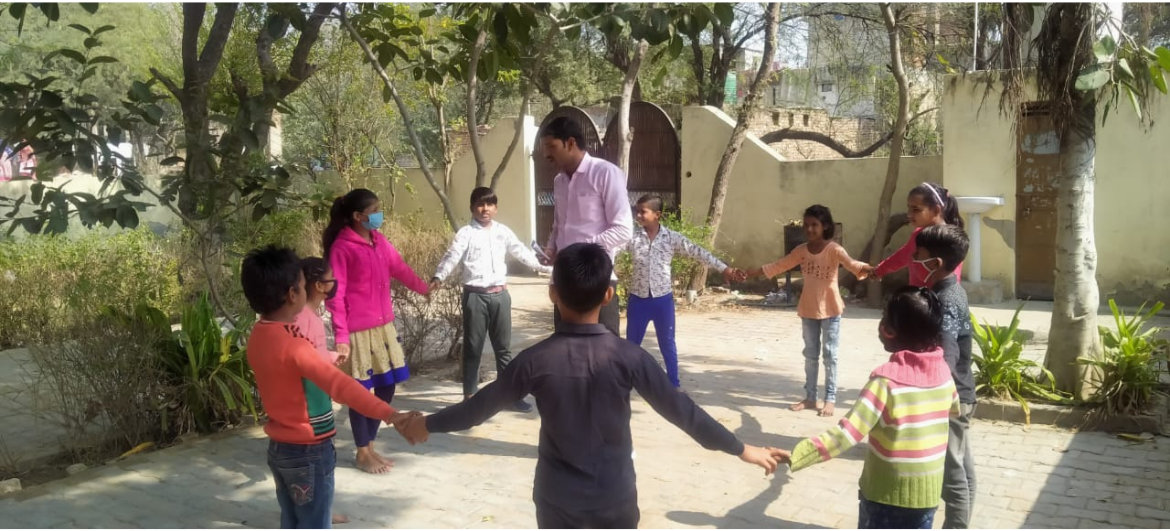Quis autem velum iure reprehe nderit. Lorem ipsum dolor sit nulla or narjusto laoreet onse ctetur adipisci.

Self-Reliant India
Supported by: Wipro
About Self-reliant India
In our work in education sector since the last 6 years, we have realized that some children who had the potential for academic growth were unable to channelize their potential. A large number of bright students had to drop out of school due to lack of educational support from all stakeholders (At home, community and school level).
It was also observed that there is a gap between the community and schools. These constant gaps and mistrust, because of low learning level among students, can be seen as one of the main reasons for low enrollments in schools and the not-so-good image of government schools. Government schools at the community level can be seen as the schools where students from disadvantaged communities study. To understand what future paths the kids choose after completing the primary education from government schools, a survey was conducted. From our survey in 2015, we have collected data of 120 academically bright students of Class 5th from the year 2000-2008 from 5 government schools of Jhunjhunu district. We started reaching out to the students from our database to understand their current situation. From that study, we concluded that 55% of students drop out before finishing class 12th and only 2% finish their graduation with appropriate exposure; others graduated with limited exposure.
Our current education system is not able to change the lives of students who come from marginalized backgrounds. There is no system to provide additional support to scholarly students coming from a marginalized community. The data and our observation showed us that the problem of “Ineffective school environment and unsupportive home and community environment” for kids from underprivileged sections results in poor student-learning outcomes and early dropouts. We also identified that low learning levels and lack of community interactions could be seen as the reasons for the dipping image of government schools.
To understand more about present systems to support kids from an underprivileged background, we did a study in Jawahar Navodaya Vidyalaya (A system of schools started by the Ministry of Education in the ’80s in every district which were CBSE Board residential schools with low dropouts) of Haryana (Rewari, Jhajjar, and Nuh), MP (Jhabua) and Maharashtra (Aurangabad). While observing the intake of these schools, we found that the majority of students joining these schools via a National Level Selection Test are from privileged backgrounds who could afford private coaching and tuitions to support them to crack the examination. 85-90% students were from private schools. This made us realize that the vision with which these schools were opened is now far from our sights.
Current Projects
The key problem that SRI seeks to address is the “gap between kids from underprivileged sections and their access to model schools like JNV”. We believe that by making them aware and providing them with training, we can improve their chances of attaining quality education through these institutions and make them self-reliant individuals in the future.
With the belief of bridging the gap of inaccessibility and unawareness, we designed a solution where the problems of them being unaware, support in training, and their parents needing counseling were taken care of. A project was initiated in 2017 named “Nanhe Kalam” where students from underprivileged sections were trained after school hours by the youth from the same community.
From 2017 till now, we have been working directly in 3 districts of Haryana (Rewari, Jhajjar, and Nuh) reaching 1250+ kids, 100+ youth trained, 25-30% improvement in Student Learning Outcome (SLO) in Math and Language and 125+ selections in JNV.
Partnership with Haryana Government – In 2019, to understand the feasibility of working with the government for a higher reach and creating long-term sustainable processes, we did an one-month pilot project with the Department of Elementary Education, Haryana where we provided our materials and guidance to 149 schools to prepare kids for JNV Test. In these schools, 2502 students, who were trained by the government teachers with the help of our learning materials, appeared for the JNV entrance exam and 51 kids were selected for JNV.
With a vision to create an army of self-reliant individuals and believing in the power of collaboration, SRI has identified four different models to scale the program in 600+ districts and reach more students.
We would be working via two main approaches – Direct Implementation (Running Learning centers and using Technology Model for the fellows and teachers) & Indirect Approach, where we would be supporting other organizations or State/District Administration in training their staff/teachers. Simultaneously, we would work with larger institutional bodies on a Low Touch Model.

